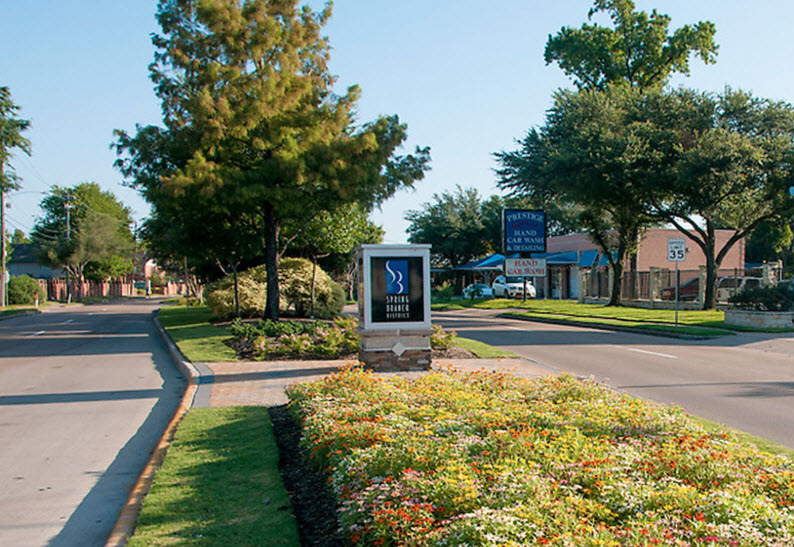Spring Branch began as a religious community settled by German farmers in the mid-to-late 1840s, many of whom owned dairies. Some of the earliest settlers included August Bauer and his wife Emilie from Wiesa, Germany, and Carl Julius Kolbe from Gotha, Germany. Kolbe settled along a spring-fed creek which flowed into Buffalo Bayou, nine miles from Houston. According to local legend, a stranger stopped by Kolbe’s place, and they walked along the creek until they reached the spot where the creek emptied into the bayou. The stranger inquired as to the name of the creek, and Kolbe replied that it did not have one. The stranger then christened it “Spring Branch.”
In 1848 farmers cleared the surrounding forestland for farms and built St. Peter’s United (Lutheran) Church with lumber set aside from one of three local sawmills on a site donated by the Bauer family, who owned the mill. The Spring Branch school district began with the Spring Branch School Society, sponsored by St. Peter’s Church in 1856. The first public school was opened in 1889, and in 1905 the local white school had forty-nine pupils and one teacher and the local black school twenty pupils and one teacher. In the mid-1950s, when efforts to form a corporation known as Spring Branch failed, a group of affluent communities known as the Villages, including Hedwig Village, Bunker Hill, Piney Point, Hunter’s Creek, Spring Valley, and Hillshire Village, were formed from the town and its surrounding region. Any remaining area was annexed by the city of Houston in 1957. In 1973 the Spring Branch Independent School District, which represented the six communities, had 40,200 students and 2,276 teachers. By the 1980s more than 80 percent of Spring Branch graduates continued their education at the university level.
The 1980s and 1990s saw a large influx of immigrants from Central America as well as the emergence of a Korean population. Spring Branch was still a named neighborhood in the early twenty-first century and contained a mix of older subdivisions and newer developments. Less expensive property rates attracted new buyers and the resulting urbanization and gentrification of some areas.
Sources: Texas State Historical Association

